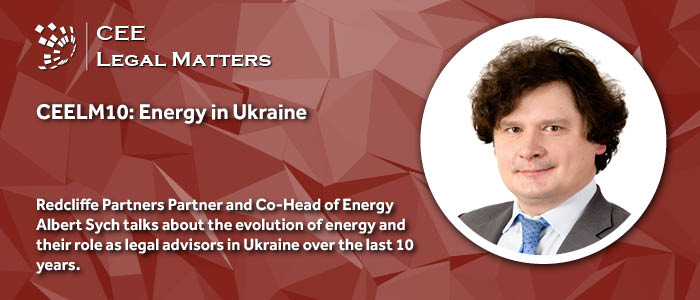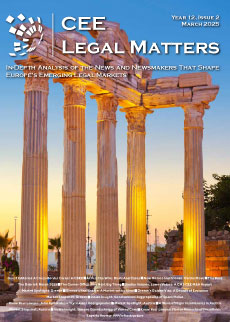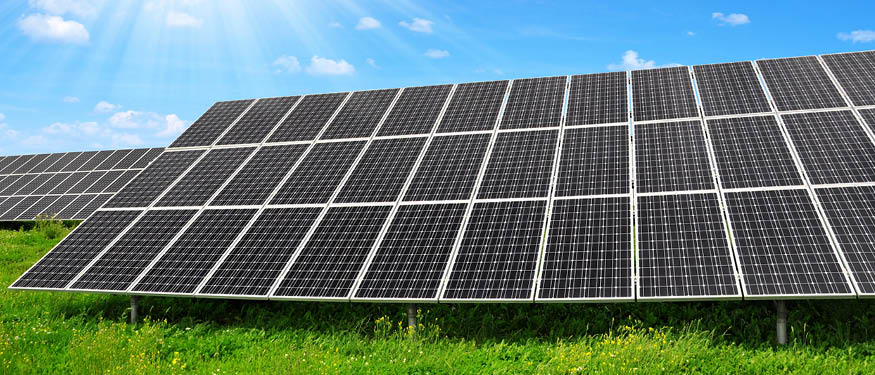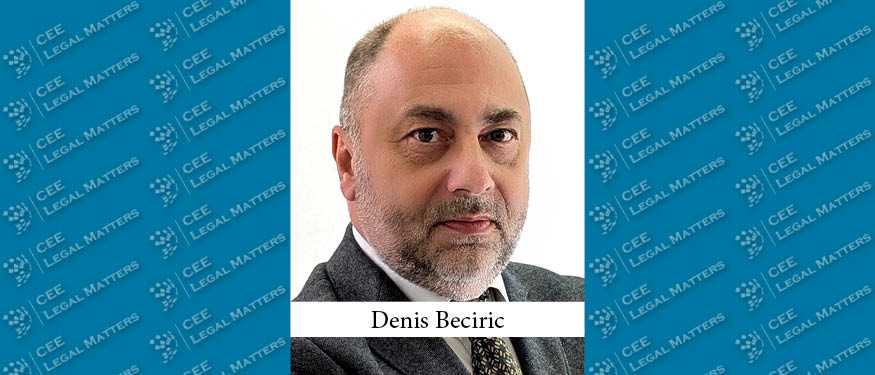Redcliffe Partners Partner and Co-Head of Energy Albert Sych talks about the evolution of energy and their role as legal advisors in Ukraine over the last 10 years.
CEELM: What types of energy projects have dominated your team's workload in the last 10 years, and how has this focus changed over time?
Sych: Over the past decade, the Ukrainian energy sector has evolved from a monopolistic and heavily regulated environment to a fully liberalized market that was re-designed to align with EU energy market regulations and Ukraine's commitments to the Energy Community. The implementation of the Third Energy Package, initially for the natural gas market in 2015 and then in 2019, and subsequently for the power sector in 2017, has opened up opportunities for energy trading and supply, including the import and export of natural gas and electricity through the border with the EU countries. These activities complement traditional projects in the oil and gas upstream and the renewables sector. Notably, our partners most actively advised on the unbundling of the Ukrainian gas transmission system operator from Naftogaz of Ukraine, which was a unique transaction in the country.
From our firm's perspective, these market reforms have enabled our lawyers to actively participate in the legislative process, contributing their practical knowledge of investor demands. This includes developing practical mechanisms for production sharing agreements (PSA) and production enhancement agreements (PEC) in Ukraine to ensure these could efficiently work. We advocated for unhindered market access, regulatory transparency, mitigation of bankability risks, investment guarantees and adequate remedies, recognition of internationally accepted transaction instruments, etc.
As a good illustration, market reforms have also fostered investments in the oil and gas and renewable energy sectors. PSAs with the state have become the primary legal instrument for attracting large-scale international investments into Ukraine's oil and gas upstream. A well-drafted PSA may alone offer stability over the lifespan of the project. However, a dedicated PSA law provides additional guarantees to PSA investors. Our lawyers have not only contributed to the enhancement of PSA legislation but have also advised on the majority of PSA projects in Ukraine. In fact, two of our partners worked on the first ever PSA in Ukraine back in 2006, and then on most of the PSAs in the following PSA rounds in 2012-2013 and 2018-2020.
In turn, joint activity agreements with state-owned oil and gas companies, known for their instability due to imperfections in the legislative governance, have become obsolete. However, significant progress has been made in deregulating the permit system, attracting top international oilfield service providers to the Ukrainian market. In recent years, state-owned oil and gas producers have also drawn their attention to PEC. Our lawyers, again, trod new ground and were the first to develop a PEC under Ukrainian law and work on first-ever PEC projects.
In the realm of renewable energy projects, the period from 2016 to 2020 proved to be the most active for our team, despite the feed-in tariff support being available since 2009. Our work extended beyond transactional support and ongoing support during the development, construction, and operation stages, as our lawyers also had an opportunity to improve the regulatory framework, particularly by addressing bankability issues existing at that time, thereby opening greater opportunities for financing of particular big projects.
CEELM: Looking back at the last 10 years, what have been your and your team’s most intense periods, and what factors do you believe led to them?
Sych: The Russian invasion in 2014 made it clear that Ukraine's urgent integration with EU energy markets is a top strategic priority to diminish Russia's ability to wield energy resources as a weapon against Ukraine's sovereignty. The reform of the natural gas market finally allowed Ukraine to jump off the Russian gas needle. Similarly, the power market reform has set preconditions to prepare the Ukrainian power system for isolated operation, independent of Russia and Belarus, and enabled an almost instant synchronization with ENTSO-E when the worst happened.
Nonetheless, merely importing energy from the EU was not a sufficient solution to Ukraine's energy security challenges. Diversification of energy sources and routes was necessary to mitigate the risks posed by Gazprom's tight grip on the European gas market – a fact that became evident just before Russia's full-scale invasion, despite some attributing the volatility in European gas prices to the decrease of demand during the COVID-19 pandemic. Fortunately, Ukraine's proven natural gas reserves are one of the largest in Europe and its geographical features make Ukraine sustainable for renewable energy production.
The most intense periods for our team have typically coincided with positive regulatory changes, including not only strategic reforms but also individual measures fostering integration with EU energy markets (for instance, the introduction of favorable gas storage and transmission tariffs for non-residents, implementation of legal mechanisms mitigating project financing risks in the renewables sector, etc.) and well-coordinated governmental initiatives aimed at attracting foreign capital – the PSA rounds we mentioned earlier.
Market stability has also presented opportunities for businesses to develop and implement practical legal solutions that streamline operations. For instance, during 2020-2021, members of the European Federation of Energy Traders (EFET) active in the Ukrainian natural gas market or trading with Ukrainian counterparties have taken this opportunity to adapt their standard contractual framework to various trading scenarios, ensuring compliance with mandatory rules and provisions of Ukrainian law.
It is also worth noting that the government's decision to phase out the Green Tariff led to a surge in renewable project development and related financing activities. As a result, in 2018-2019 Ukraine added a record amount of solar and wind capacity, making it one of the fastest-growing renewable energy markets in the region at that time.
CEELM: How have the profiles of energy projects evolved over the last decade, and what trends do you observe in terms of the energy project categories and investments?
Sych: The profiles of energy projects have evolved from predominantly large-scale investments of international market leaders, equipped to navigate political risks and heavily regulated markets, to a more diverse mix varying in investment size and targeting different market segments. This shift, while expected as a result of market reforms, has been deeply influenced by Ukraine's unique geopolitical challenges.
The onset of the Russian war on Ukraine in 2014, beginning with the annexation of Crimea and military invasion in the Eastern regions of Ukraine led to the loss of control over some oil and gas assets and posed a significant risk to operations near the war zone. Consequently, major international players such as Shell (developing shale/tight gas block in Eastern Ukraine), Eni with EDF (Black Sea shallow shelf), and a consortium led by ExxonMobil and including Shell and OMV Petrom (Black Sea deep water shelf), had to withdraw from their PSA projects. Even Chevron, with investments in the seemingly safer Western region, reassessed its position due to various issues. The first-ever PSA in Ukrainian history – with Vanco Prykerchenska – remains technically on hold, with a revival unlikely without substantial renegotiation of its terms.
The absence of oil and gas companies of such scale on the market did not attract many major international investors during subsequent PSA tender rounds in 2018-2020, despite the promising opportunities. However, large Ukrainian businesses and even Ukrainian state-owned companies were involved. Our current team, having worked on all these projects, including the pioneering Vanco Prykerchenska project, feels a sense of loss for such missed opportunities.
Similarly, the Ukrainian renewables sector's trajectory was altered by geopolitical events. In the early 2010s, our lawyers had already advised on the acquisition of large-scale wind projects in Crimea. Moreover, the 2022 full-scale invasion by Russia halted several advanced large-scale wind projects that were all set for realization.
Beyond serving traditional clients, Ukraine's strategic course towards the EU has brought support for policy, institutional, and regulatory reforms from leading international financial institutions, such as the World Bank, EBRD, IFC, and EU political institutions and intergovernmental organizations. Our lawyers worked on numerous projects of this nature, and we anticipate further opportunities in connection with post-war recovery needs and Ukraine's continued alignment with the EU.
CEELM: In terms of client needs, what new expectations do you see emerging in the energy sector, and what aspects do you think have decreased in importance over time?
Sych: In the current conditions when clients cannot operate with their usual confidence, it is essential for the state to maintain clear and consistent regulatory and tax policies. To survive in the long run, businesses require predictable environments where the state does not create any new regulatory barriers and existing hurdles can be addressed at least as usual. Foreign investors are more likely to discontinue their operations and exit the market, rather than take safety and reputational risks.
Although non-market interventions in the energy markets may be unavoidable under worst-case scenarios, they must be fair, ensure quick and efficient recovery, and be introduced in a lawful and transparent manner. A continued move towards integration with the EU is also critically important in the current environment.
In light of the above, lawyers must keep their clients aware of minor issues, even if such could have been easily addressed in the past under normal circumstances. Clients may be more concerned with regulatory compliance which increases the practical value of timely alerts of the shifting legal landscape. Clients may see no additional value in comprehensive reports compared to red flag summaries. Deeper knowledge of EU legislation and market practices may ensure that these principles are eventually applied in Ukraine. This is a critical time for law firms to leverage the momentum and align legal standards with those of the EU.
CEELM: From a legislative/regulatory standpoint, what have been the main recurring challenges your team has faced in facilitating energy deals and projects?
Sych: As the Ukrainian energy market continues its transition towards European standards, the evolution of its regulatory framework remains a critical challenge. Legal professionals representing major investment clients face the task of convincing regulators, government officials, and, when necessary, members of parliament, of the need for legislative amendments that mitigate financing and investment risks for their clients and their lenders.
When it comes to state contracts, such as PSAs, there is often hesitancy on the part of the state to acknowledge the substantial risks investors undertake by committing to such projects. The state must recognize the necessity of providing investors with adequate contractual protections to address these risks. This is particularly relevant when investors suggest implementing best industry practices that may not be explicitly regulated under Ukrainian law.
CEELM: What is on the horizon for the energy sector? What do you believe will be the highlights in a similar interview 10 years from now, and how do you anticipate the industry evolving?
Sych: Over the past decade, Ukraine has undertaken significant transformations across the primary segments of its energy markets. These reforms have initiated Ukraine's integration into the European energy markets while simultaneously uncovering numerous challenges that must be addressed to achieve this objective.
As the largest country entirely within Europe, Ukraine plays an important role in contributing to Europe's energy and climate goals. However, the future trajectory of the Ukrainian energy sector is contingent upon the outcome of the ongoing Russian war on Ukraine and Ukraine's ability to rebuild and modernize its energy infrastructure, which has sustained severe damage from Russian attacks aimed at crippling civilian access to heat during the winter months.
In the coming years, the Ukrainian energy sector is expected to highly rely on the most available resources. Nuclear power, which constitutes over half of the country's total electricity production, has become increasingly critical in 2022. However, the operational lifespan of these nuclear facilities is nearing its end. For example, the decommissioning of the oldest units at the Rivnenska Nuclear Power Plant is scheduled for 2030-2031. By then, Ukraine must either construct new units or identify other options to replace the retired capacity.
Hence, the focus on energy security will continue to drive the strategy for Ukraine's oil and gas upstream sector, emphasizing the enhancement of domestic production. While greenfield investments are improbable during the conflict, international investors may explore partnerships with existing license holders, particularly state-owned oil and gas companies that may require additional capital or expertise to explore less developed areas or to maximize extraction from maturing fields.
Undoubtedly, Ukraine needs a shift towards a more diversified energy mix, with an increased role for renewable energy sources. Under the Clean Energy Package of the Energy Community, by 2030 Ukraine must reach a target of 27% of renewable energy in gross final energy consumption. As stakeholders contemplate new support mechanisms for Ukrainian renewables, wind and solar projects are anticipated to continue their development over the next decade.
Opportunities for energy traders and suppliers are likely to re-emerge only after martial law ends, as currently the state is forced to heavily intervene in the market governance for electricity and gas. Notably, even during the war, European traders continue to utilize Ukrainian underground gas storages, which are predominantly situated in the West. The synchronization with ENTSO-E already now allows independent electricity traders to compete for cross-border capacity with European countries, although a significant portion of export revenues must be allocated to the off-taker to subsidize the electricity market. Improvement of price forecasting and further reforms on the electricity market, as well as other cross-sectoral regulatory improvements (on derivatives trading, for instance), should create an appealing environment for European energy trading in the post-war years.
International support is certainly crucial in helping Ukraine maintain its energy sector during the conflict and will remain equally important in carrying out the post-war reconstruction, especially in power transmission and distribution networks and generation capacities. Such an opportunity could be used to integrate energy storage technologies and evolve towards more flexible and responsive systems that can accommodate variable renewable energy sources and empower consumers as active participants in the energy market.
Redcliffe Partners is CEE Legal Matters' Practice Leader for Energy in Ukraine for 2024 – learn more here.
This article was originally published in Issue 10.11 of the CEE Legal Matters Magazine. If you would like to receive a hard copy of the magazine, you can subscribe here.

















